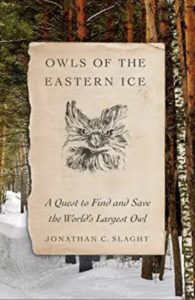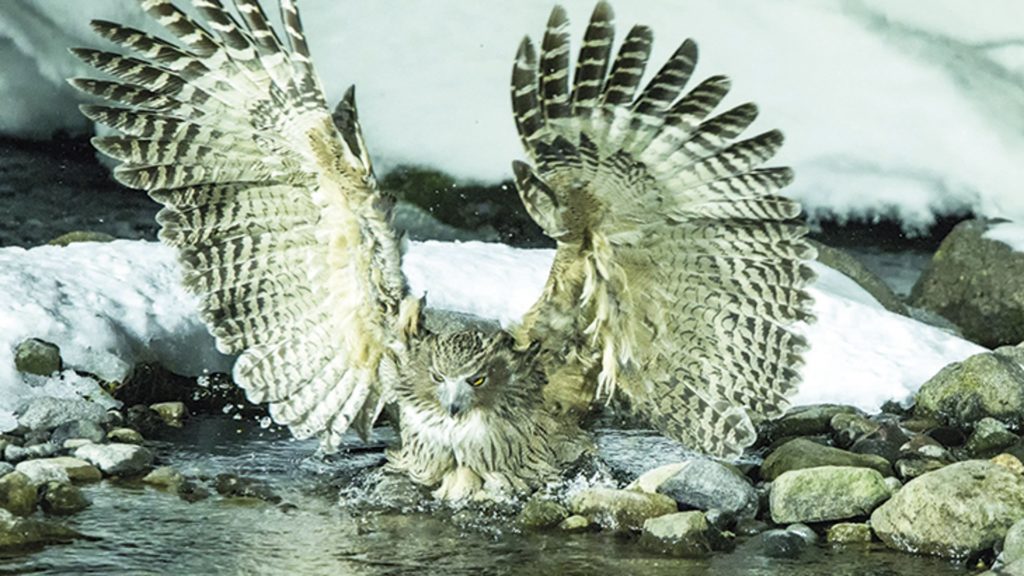2020 National Book Awards non-fiction long list: OWLS OF THE EASTERN ICE by Jonathan C. Slaght (Russia)
The 2020 National Book Awards Longlist: Nonfiction
This week, The New Yorker will be announcing the longlists for the 2020 National Book Awards. So far, we’ve presented the lists for Young People’s Literature, Translated Literature, and Poetry. Check back tomorrow morning for Fiction.
This year’s longlist for the National Book Award for Nonfiction includes:
Jonathan C. Slaght, Owls of the Eastern Ice: A Quest to Find and Save the World’s Largest Owl, Farrar, Straus and Giroux/Macmillan Publishers
•
 Owls of the Eastern Ice: A Quest to Find and Save the World’s Largest Owl
Owls of the Eastern Ice: A Quest to Find and Save the World’s Largest Owl
By Jonathan Slaght (Russia 1999—02)
Ferrar, Straus and Giroux
August 2020
358 pages
$28.00 (Hardcover)
Reviewed by Fuller Torrey, MD (Staff/Ethiopia 1964-66)
•
For those of us whose Peace Corps experience involved villages in countries such as Bolivia, Ethiopia, India and Thailand, placing Peace Corps volunteers in Russia seems like a disconnect. But indeed between 1992 and 2003 722 Peace Corps volunteers served there, including Jonathan Slaght, the author of this most interesting book. He spent three years in Russia’s Far East, 4,000 miles from Moscow in remote villages, a full day’s drive north of Vladivostok. In fact, he was among the last volunteers to leave when Russia kicked the Peace Corps out after accusing it of using volunteers as spies. The only disappointing thing about this book is that the author writes almost nothing about his Peace Corps experience other than the fact that he married a fellow Volunteer who also served in the Far East, and also that, in retrospect, he realized that he had been watched by the Russian FSB, the state security service that is the successor of the KGB.
However, it was during his Peace Corps years that Slaght spotted his first Blakiston fish owl, a rare and endangered bird that lives only in Russia’s Far East, adjacent China, and northern Japan. It is the largest known owl with a wingspan over 6 feet and feeds on fish by wading in icy rivers. Slaght became intrigued by the owl and subsequently spent parts of five years returning to Russia to study the owl as part of his Ph.D. thesis on wildlife conservation at the University of Minnesota. The book is an account of that five-year study in which he first identified the areas where the owl was nesting, then trapped several owls and fitted them with transmitters that would allow their movements to be monitored. Finally, he collected 4 years of data on the areas used by the owls, areas that could then be put off-limits to logging, thereby conserving the owls.
The book is very well written and a good read. He settles into his final season of fieldwork “like a handshake with an old friend”. Following a periodic flood, a bridge does not wash out but rather “the bridge had once again been called to the sea.” The odd-looking owl is described as if “someone had hastily glued fistfuls of feathers to a yearling bear, then propped the dazed beast in a tree”. The author’s obsession with the fish owl reminded me of Peter Mathiessen’s obsession with the snow leopard but without the accompanying mysticism, despite the fact that the fish owl was apparently revered by the ancient Ainu people in Japan. Sleeping in a tent in the middle of the winter in order to check the traps set for the owl every three hours involves a level of dedication that exceeds most Ph.D. theses. Slaght deftly handles the description of his Russian colleagues and their adventures as bridges wash out and vehicles get inevitably stuck in the snow. I also found the author’s description of wildlife conservation of interest — that it involves not only the preservation of the owl but also the economic needs of the people for whom lumbering is the major available industry. In summary, a very good read about an animal and an area of the world you are not likely to otherwise encounter.
•
Dr. Torrey was a staff Peace Corps physician in Ethiopia from 1964-1966. He is the author of twenty books, including most recently Evolving Brains, Emerging Gods: Early Humans and the Origins of Religion.
No comments yet.
Add your comment